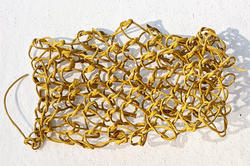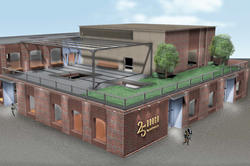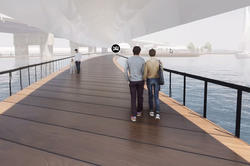Students in a cross-disciplinary fall studio interpret cultural history and use geo-textiles to restore what was once described as “America’s hardest-working river.”
Drawing People In
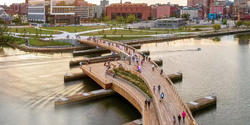
Is it possible to use design to cultivate a deeply rooted sense of place in a public setting? How do artists leverage quantitative and qualitative research to create meaningful public installations that build community and provide a shared sense of agency? Students in a Landscape Architecture studio co-taught by Courtney Goode and Zoë Mueller delved deeply into such questions and uncovered many more this fall while designing and mounting low-cost, small-scale popup installations in Providence’s Innovation District Park, where the recently built pedestrian bridge crosses the Providence River.
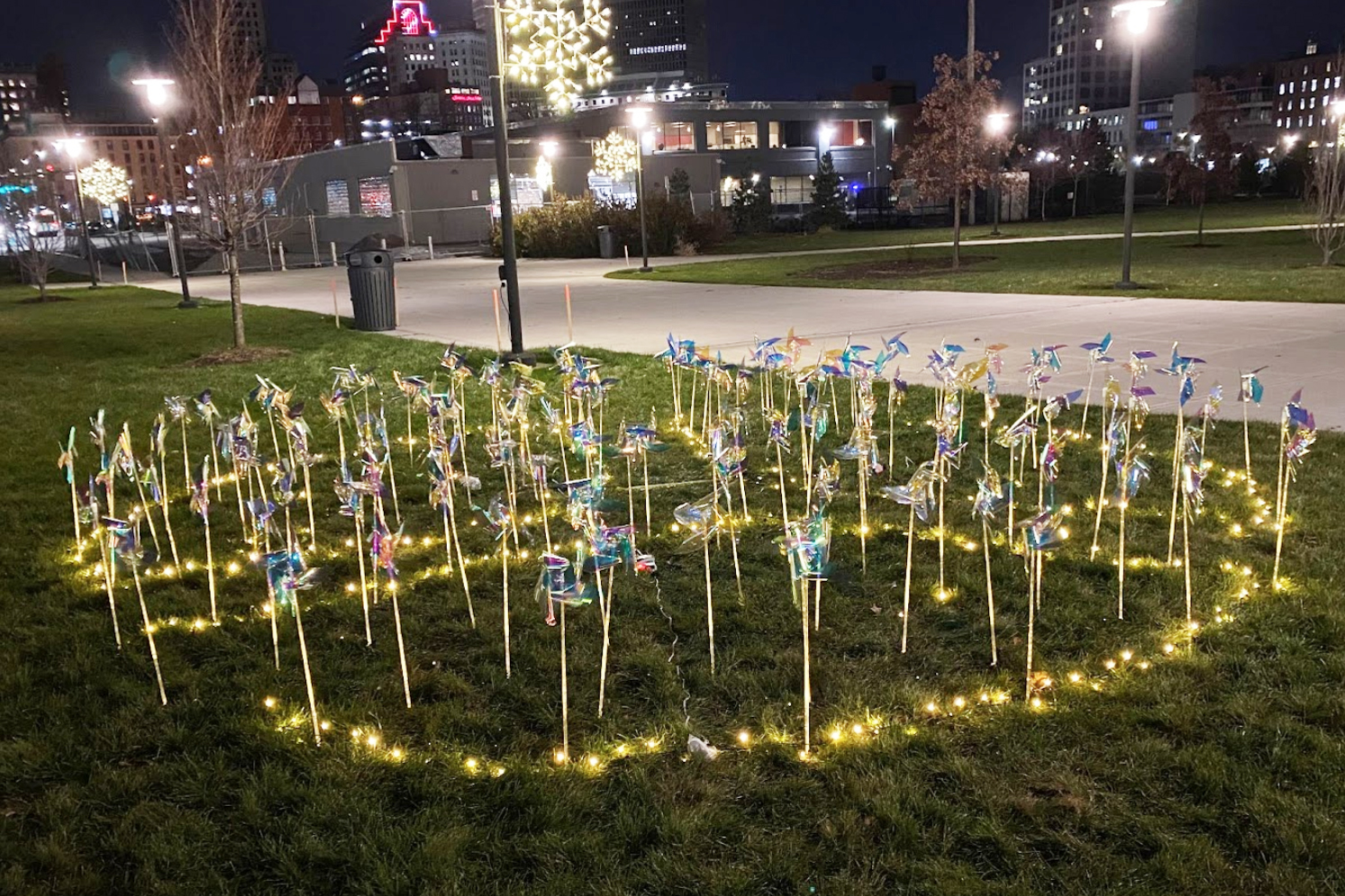
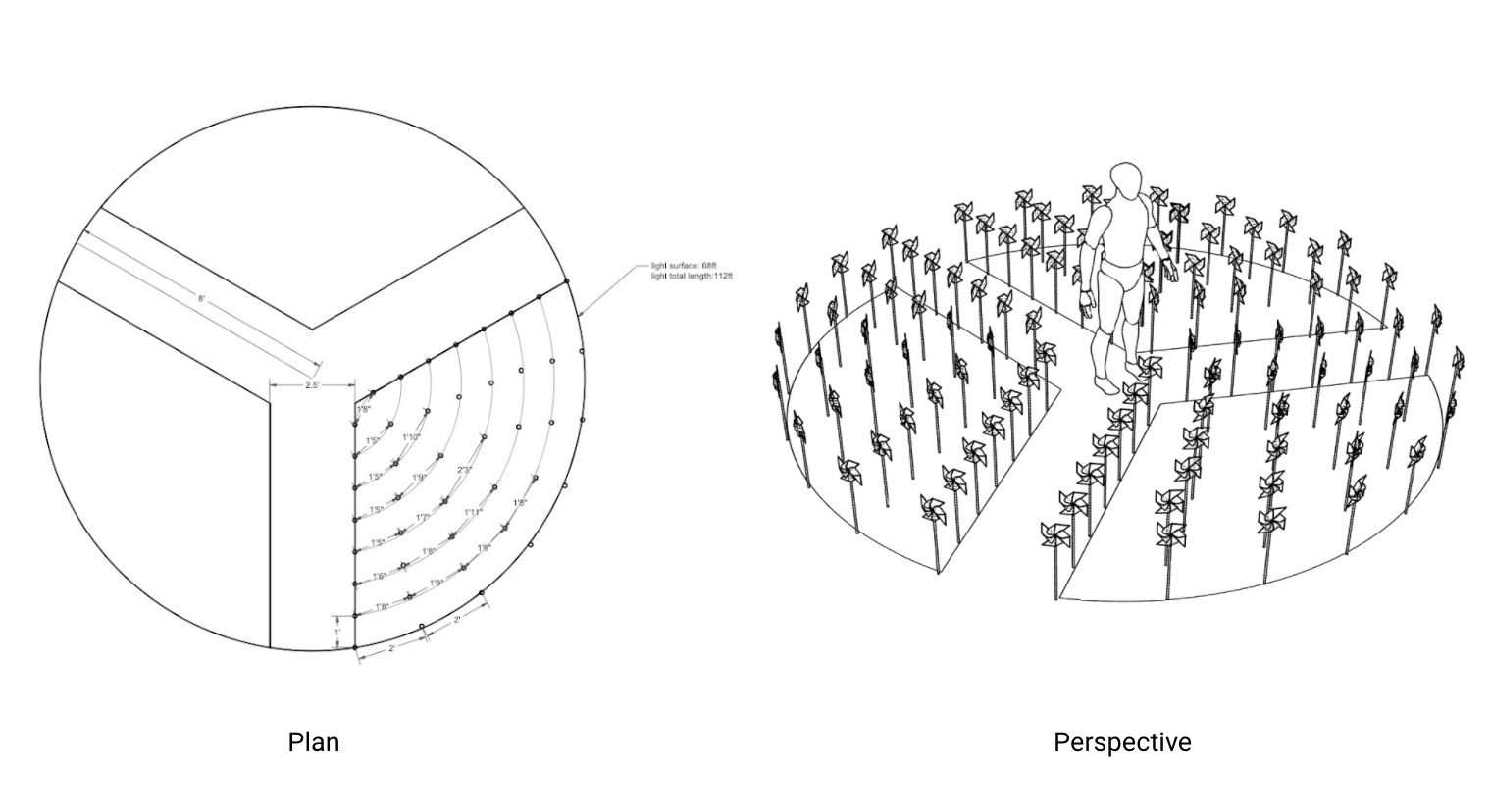
The site has changed dramatically over the decades, serving as a busy commercial wharf in the 19th century before the construction of a hurricane barrier in the late 1930s and a viaduct for route I-195 in the 1950s. The highway was rerouted some 40 years later, freeing up more than 26 acres of land for redevelopment.
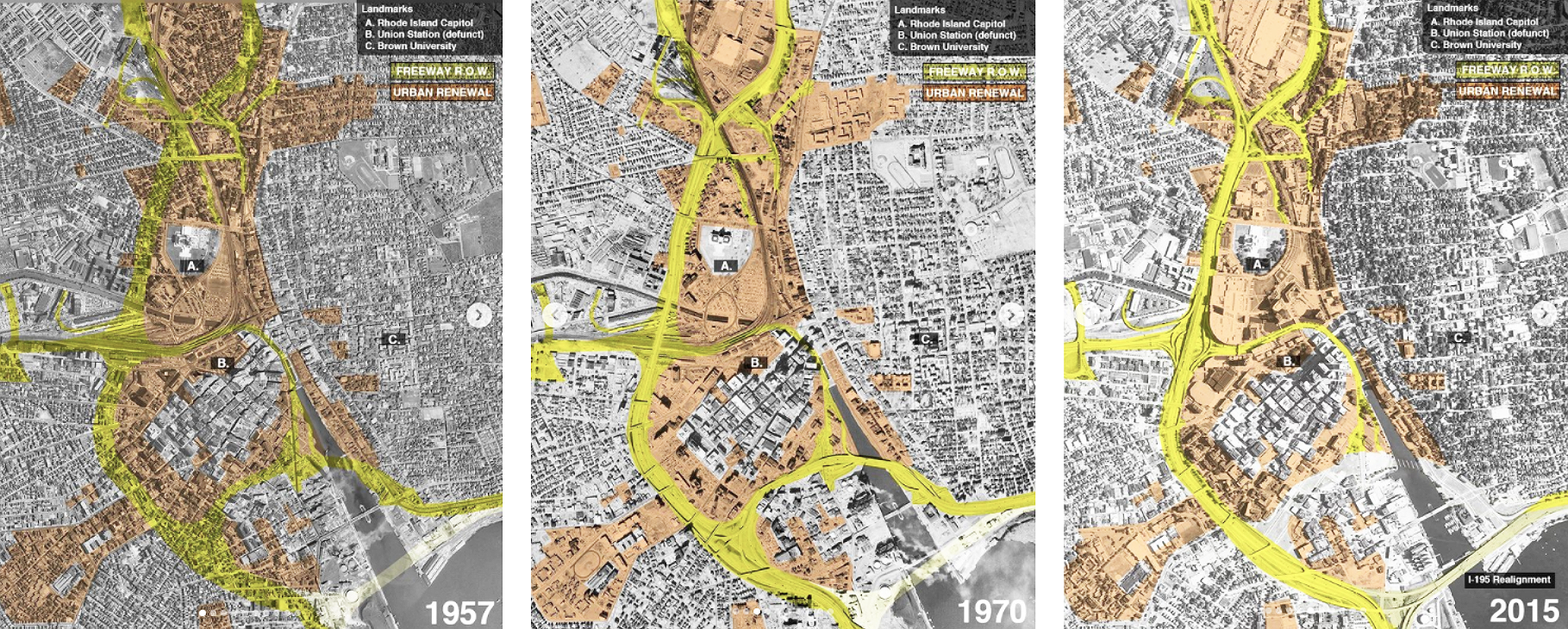
In late December, students presented their projects to a hybrid gathering of visiting critics that included Landscape Architecture faculty member Adam E. Anderson MLA 12, Architecture Professor Gabriel Feld, and urban planners and Harvard faculty members Stephen Gray and Daniel Thomas D’Oca.
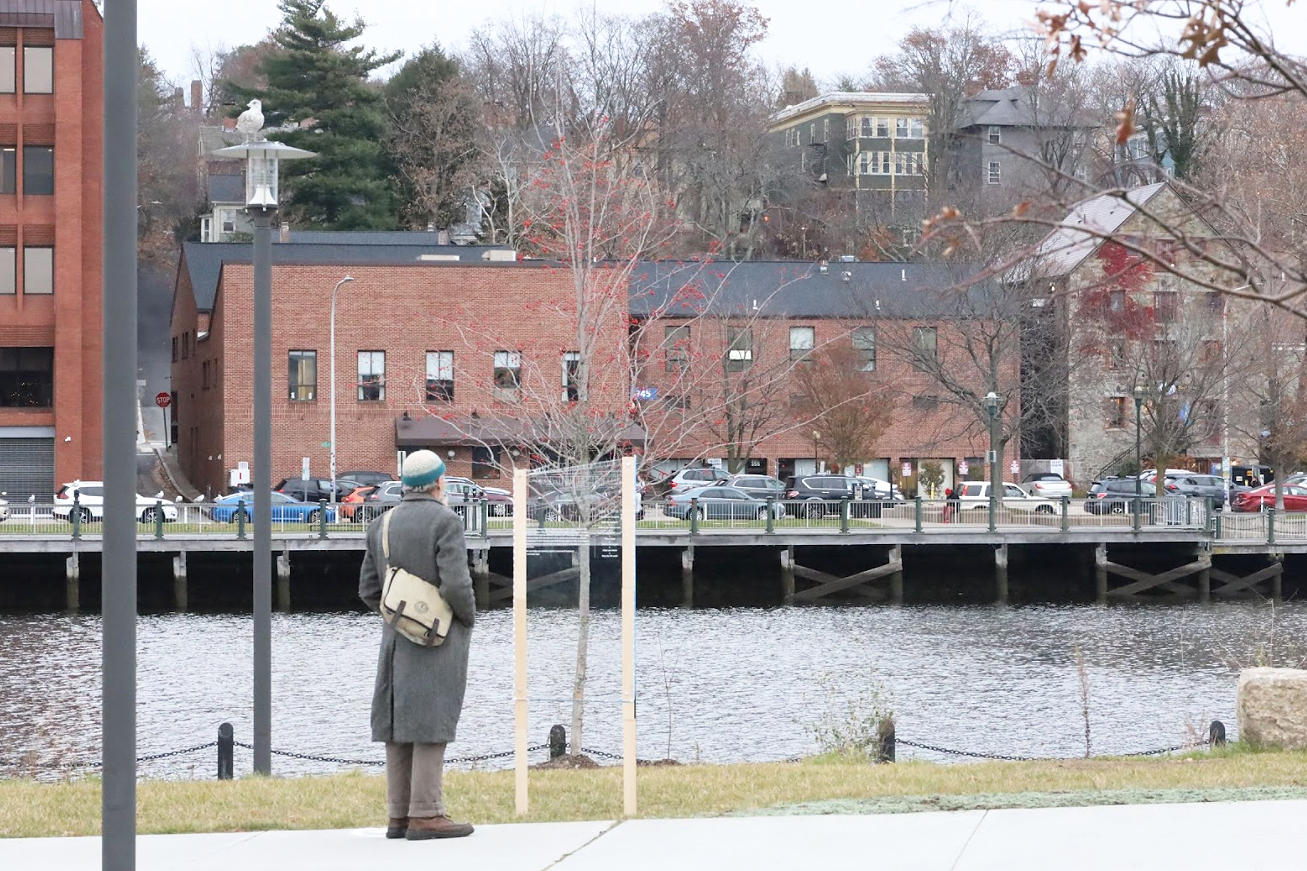
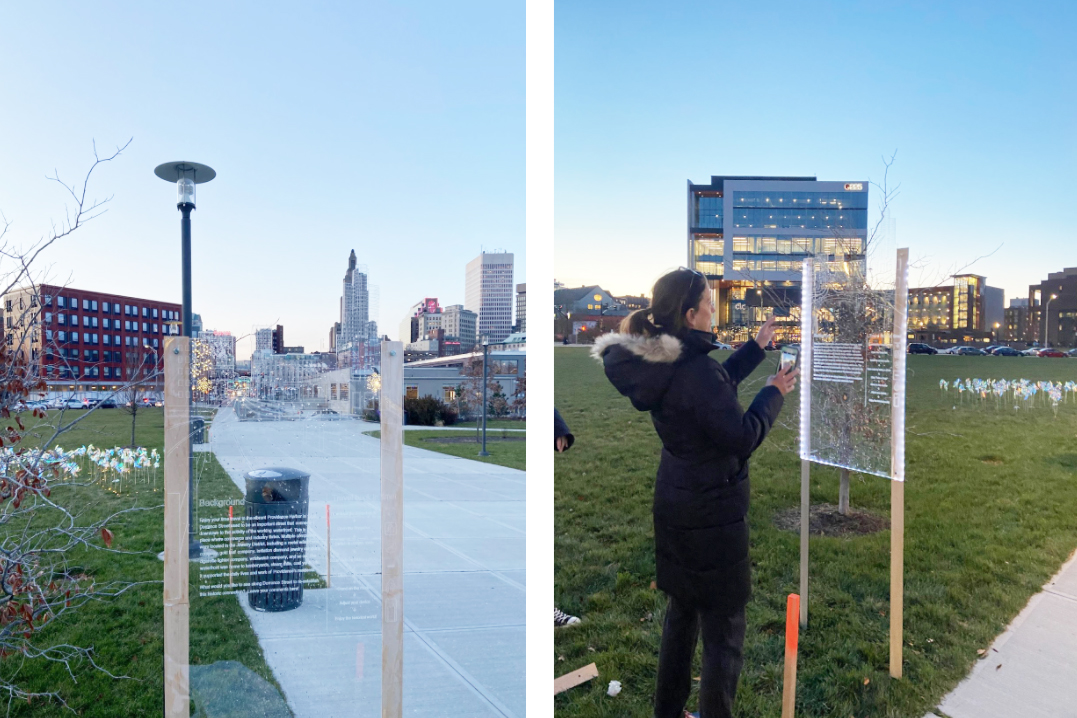
Grad student Yan Liu MLA 22 shared a project she calls Hi Stranger that uses chalkboards to gather personal comments in response to simple prompts such as “A stranger made my day when… .” While the class appreciated the ephemerality of the piece (rain washed away the comments on a daily basis), D’Oca wished the setup felt less “off the shelf” and included more colors and unexpected design details. He was particularly taken with Liu’s story of kindly passersby who offered to hold one end of the measuring tape while she was installing the piece. “What if you designed something that intentionally failed every day so strangers would be drawn in to help you repair it?” he mused.
“What if you designed something that intentionally failed every day so strangers would be drawn in to help you repair it?”
“One key theme we’re focusing on is community outreach and how to translate people’s feedback into recommendations that drive new developments,” Goode says.
Weirong Luo MLA 22 and Wenlin Yang MLA 22 were able to inspire community members with their extensively researched Wind, Light, Flow installation (see photo, above) designed to make visible changing wind conditions using LED lighting and pinwheels made of holographic film. “The pinwheels are more stable than we expected (and survived 60 mph winds),” they note, “and they create a satisfying white noise that attracts people.”
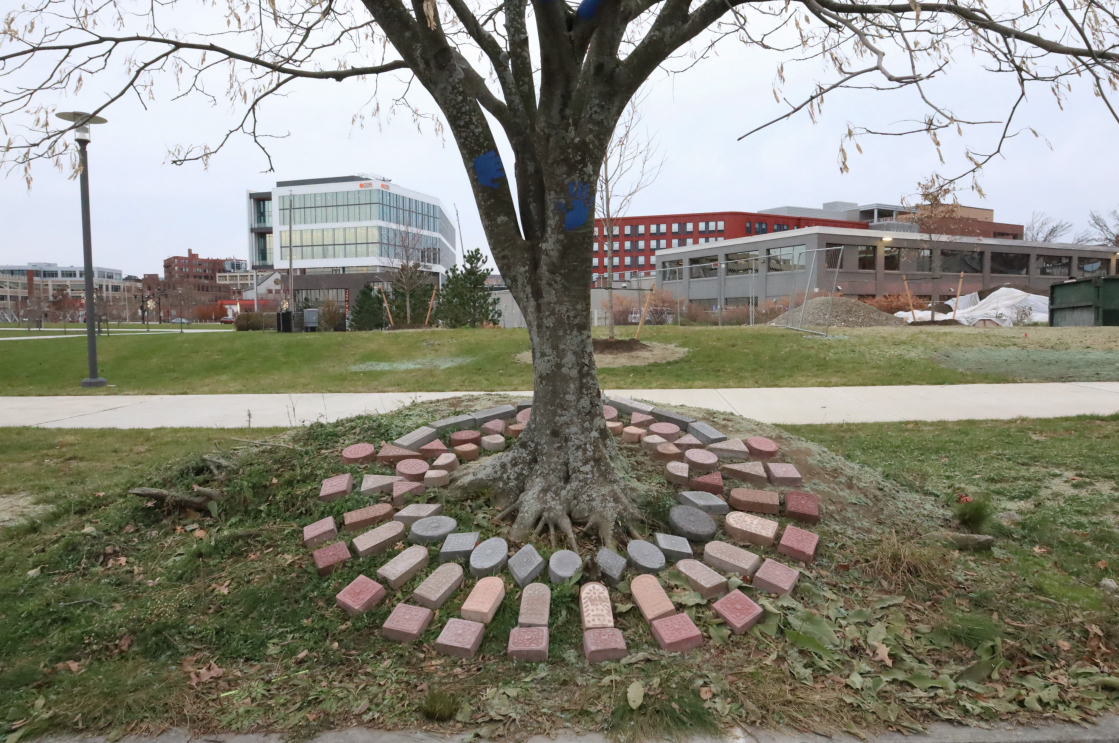
Seung Oh MLA 22 offered The Bejeweled City, a series of installations made from colored cast concrete forms paying homage to Providence’s historical architecture styles as well as its history of jewelry and brick production. “My goal was to contribute to the identity and brand of Providence’s Innovation and Design District, connect it to the Jewelry District by addressing industrial history and find an identity for the park that ties together the city’s past, present and future,” he explains.
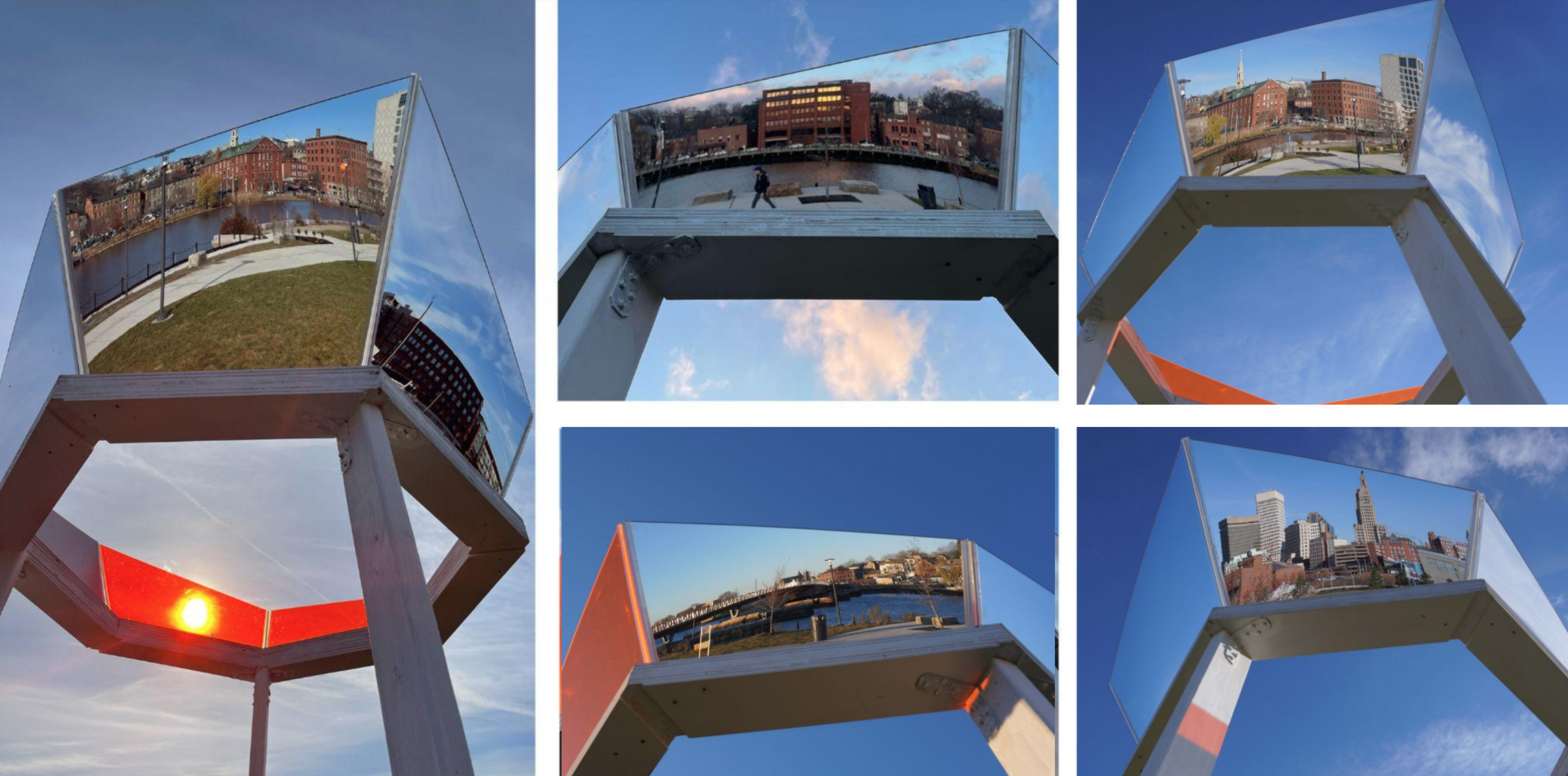
“The experience of confronting mirrored reflections makes people pause and think about the space itself.”
A popup by Xiuyan Qin MLA 22 and Ziyu Wang MLA 22 focused first and foremost on grabbing people’s attention with a series of elevated mirrors that produce new visual encounters. “The experience of confronting mirrored reflections makes people pause and think about the space itself,” they say, “its physical layout, natural beauty and historical transformations. Although visual experiences are ephemeral, the awareness of the place is long-lasting.”
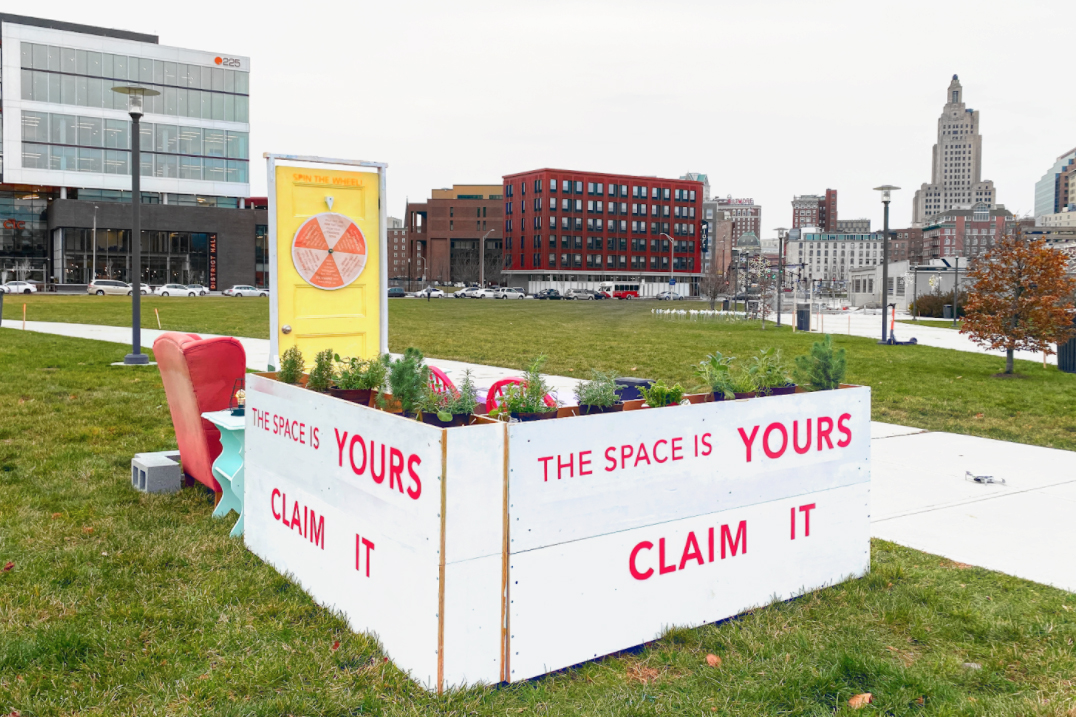
Goode and Mueller appreciate the thoughtful details the students included in their proposals and feel confident about the larger lessons learned in the class. “Our main goals were to teach students to use historical research to inform engagement, design and implementation and to come up with innovative and responsible methods for inviting community engagement,” they note. “Each of the installations in this wide-ranging series met those goals and temporarily breathed new life into the site.”
—Simone Solondz
December 22, 2021
